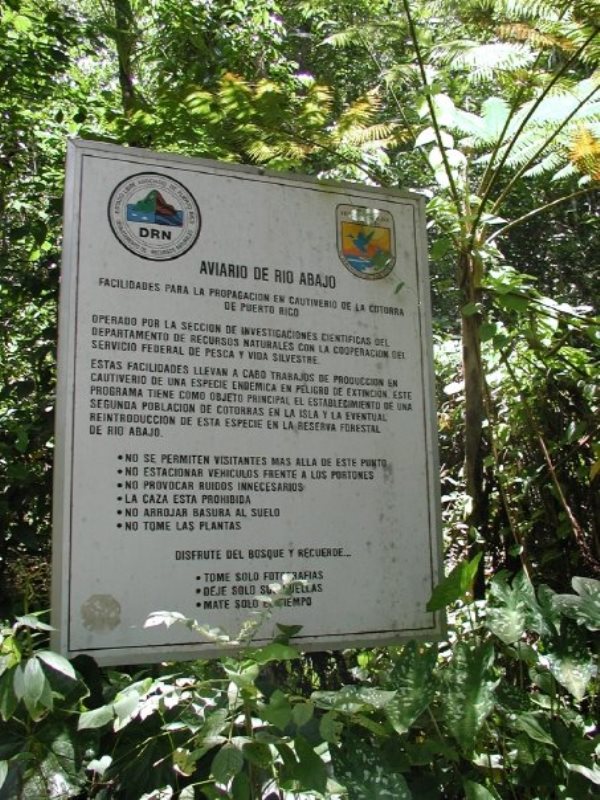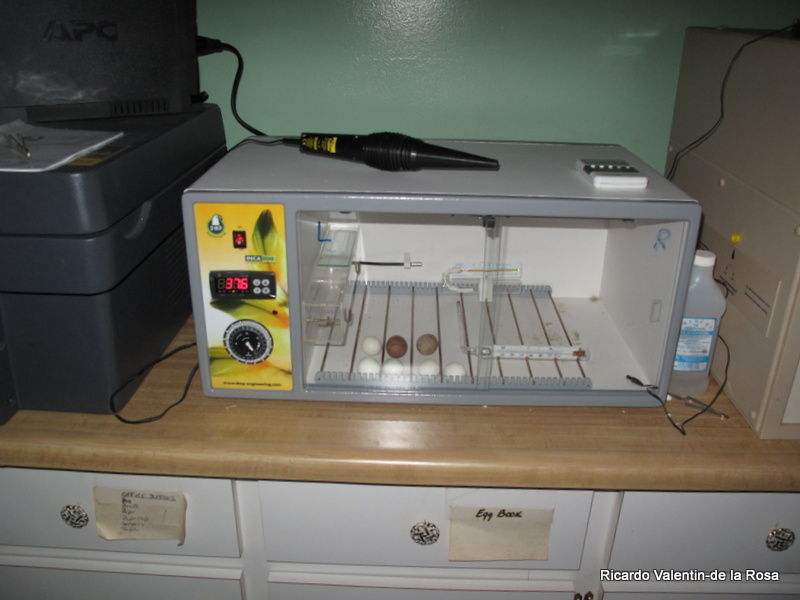The Recovery Program of the Puerto Rican Parrot – Continued
10
Aug, 13
posted on 12:04 pm by Opher
This is a follow to my last post on the Puerto Rican Parrot.
The Puerto Rican Amazon (Amazona Vittata) is also known as “Iguaca”, the name used by the Taino American Indians, capturing the essence of its raucous call. Endemic to Puerto Rico, it is the USA’s only native parrot that was listed in 1967 as an endangered species. In 1975, only 13 individuals were existing in nature, making it one of the ten most endangered birds in the world.

The US Fish and Wildlife Service and the Puerto Rico Department of Natural and Environmental Resources (DNER) initiated a Recovery Program. This was an effort to conserve, protect and manage the wild and captive populations in order to downlist the species from endangered to threatened status as well as to establish additional wild populations and make sure that they are self-sustained within the their native habitat.
For this purpose the DNER built an Aviary in the Río Abajo State Forest in the municipality of Utuado.
Jafet Velez-Valentin, Iguaca Aviary Operations Coordinator, was happy to summarize 2012’s breeding season highlights:
“2010 and 2011 were outstanding years, but in 2012, we worked very hard to raise the bar and team work has been the key for success… 2012 has been so far the best year in the history of the Puerto Rican Parrot Recovery Program/Iguaca Aviary…
We had the highest fertility ever in 40 years of history of the Iguaca/Luquillo Aviary, a 77.03%, a level never seen before.

The highest before was in 2011 with 64.94% and in 2006 with 59.42%.
However, the average fertility in our aviary used to range between 16% and 45%. Remember those days when fertility was very low and we use to have between 1 to 3 or 4 chicks per year, or sometimes not a single chick a year?
Do you remember those days when having 5 or 7 chicks a
year was reason enough to throw a party?
Well this year we produced 57 chicks with a survival record of 70.17%, an all time record for the program.
When we put together the most recent successful years; 2011 (40 chicks), 2010 (38 chicks) and 2009 (31 chicks) that is a total of 166 chicks in the last four years.
In just that period of time we produced more chicks than all the years combined between 1979 and 2004, a 25 years period.
Another record established this year was that we were able to “assemble” 33 fertile breeding pairs; the highest number before was 26 pairs in 2011 and 19 during 2010.

The Río Abajo aviary had a very good year too, with a hatchability and survival rate until fledgling stage similar to the Iguaca/Luquillo Aviary. Both aviaries were able to provide chicks for the management and success of several nesting cavities in the wild at El Yunque National Forest (formerly known as the Caribbean National Forest) and at the Rio Abajo State Forest, and being the cornerstone of the release program providing enough individuals for such purposes.
We are very proud to say that when you put together all the components of the program (both captive breeding facilities, both wild flock management programs and the releases program). We have an all-time record of around 400 Puerto Rican Amazons”
Ricardo Valentin, who we mentioned in the previous post added an update on his FB Wall on July 4, 2013:

” I took this photo to celebrate the groundbreaking 2013 breeding season for the PR
Here is the Amazona Vitatta in flight and you can see the turquoise blue/black color combination that is characteristic to this bird. No training was needed for this photo,
just the absolute trust of the bird and a good knowledge of its behavior.. .
Along with the 2012 report we received from Jafet Velez-Valentin the following e-mail:
Subject: INCA Incubators at our aviaries
“Yes, your incubators were part of the success story, especially at Rio Abajo…
Look at that, back in 2010, we met half around the world in Canary Islands and now your equipment has become a key part for the recovery efforts of one of the most endangered parrots in the world...“
We’d like to thank Jafet Velez-Valentin and Ricardo Valentin-de la Rosa for the information and photos. We at DMP Engineering are happy to be part of this important conservation effort!



